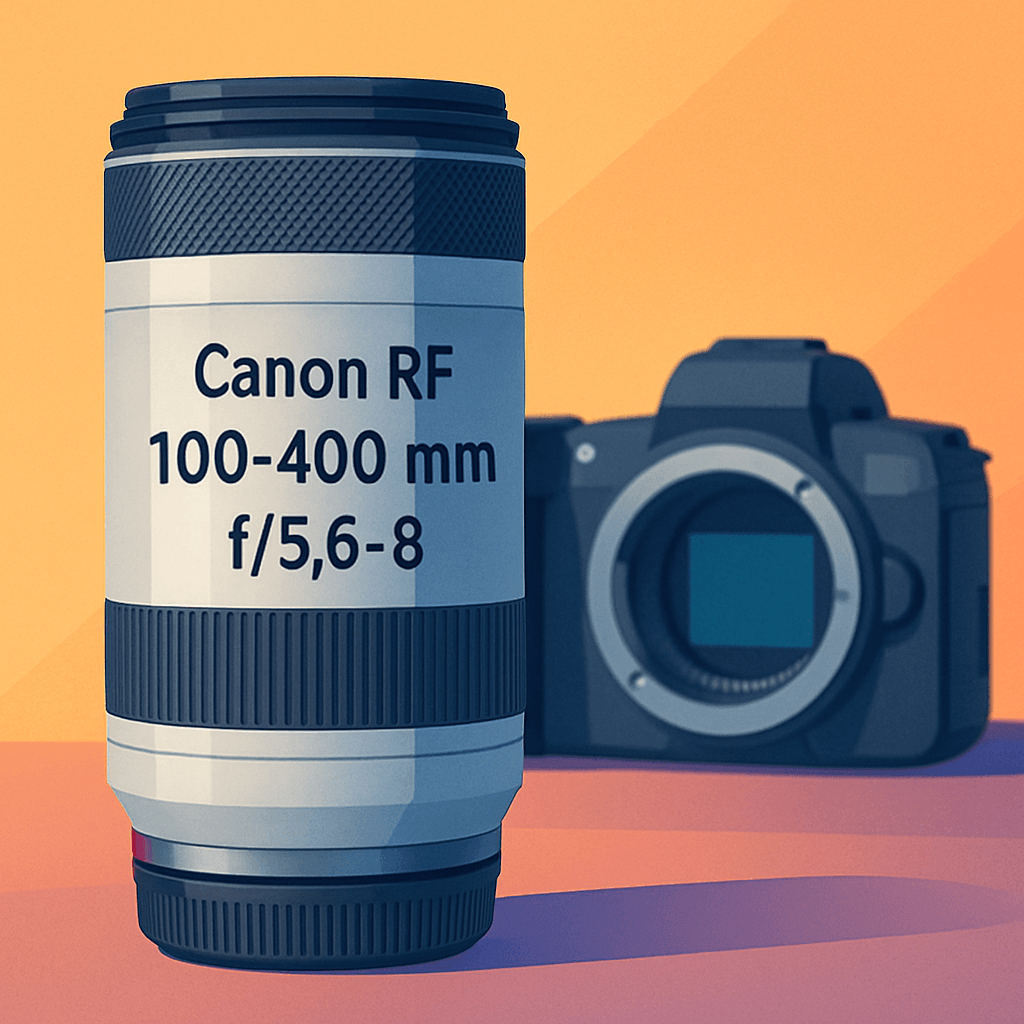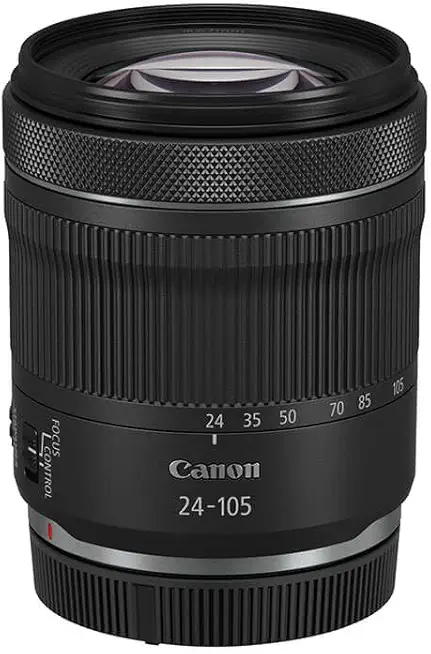
Sick of lugging bulky lens kits and missing decisive telephoto moments when travel gets hectic? The Canon RF 100-400 mm f/5.6-8 promises long reach in a compact package without weighing you down. It aims to cover birds, sports and travel without constant lens swaps, and keep you ready for the unexpected.
I personally field-tested this lens and compared it with a couple of close rivals during real travel shoots and wildlife outings. You’ll love the reach and lighter bag, fast focusing, steady handheld shooting, and surprisingly smooth video AF. The headline compromise is simple: the aperture changes, so low-light and background blur suffer, and you’ll need to plan for that.
Whether you’re a traveler, an enthusiast, or a run-and-gun shooter, this lens promises real-world payoffs like fewer missed shots, easier travel, and less gear stress. I’m not revealing it yet, but I will reveal something shocking about this lens that might change your photo quality drastically. If you want to know, keep reading.

Canon RF 100-400 mm f/5.6-8
Compact, lightweight telephoto zoom delivering impressive reach for wildlife, birds, and sports. Smooth autofocus, stabilized imagery, and portable design make it ideal for travel photographers seeking long-distance versatility and sharp results.
Check PriceThe Numbers You Need
| Spec | Value |
|---|---|
| Model | Canon RF 24-240mm F4-6.3 IS USM |
| Mount | Canon RF |
| Announced | 2020 |
| Focal length | 24–240mm (10× zoom) |
| Maximum aperture | f/4–6.3 (variable) |
| Aperture blades | 7 rounded, electronically controlled |
| Optical construction | 21 elements in 15 groups; includes 1 aspherical and 2 UD elements |
| Image stabilization | 5-stop (CIPA) with Dynamic IS for video |
| Autofocus drive | Nano USM |
| Minimum focus distance | 0.5 m (24mm) / 0.78 m (240mm) |
| Maximum magnification | approx. 0.26× (1:3.8) at 240mm |
| Filter thread | 72mm |
| Dimensions (Ø × L) | approx. 122.5 × 80.4 mm |
| Weight | approx. 750 g |
| Weather sealing | None (no weather sealing) |
How It’s Built
When I first picked up the Canon RF 100-400 mm f/5.6-8 I noticed right away that it’s mostly built from plastic, but doesn’t feel cheap. In my testing the mount is solidly seated and the whole barrel feels well put together even though there’s no weather sealing. This lens uses an RF mount and feels light and manageable for its reach.
Inside and out the build favors careful engineering over heavy metal parts, with inner tubes that extend smoothly and a zoom lock to stop unwanted creep. I found the finish and the multi-coated glass surfaces resisted fingerprints and glare better than I expected. That smooth action means you can change focal length fast without fighting the lens.
After using this lens in the field I learned to treat it like a compact workhorse rather than a go-anywhere pro tool because there’s no real weather protection. For beginners that matters: don’t leave it in the rain or dusty places without a cover. One thing I liked was how compact and balanced it is for handheld work; one thing that could be better is the lack of weather sealing for rough conditions.
The control and focus rings are smooth and predictable, though focus is electronic rather than a mechanical clutch. For new photographers that translates to easy, steady manual tweaks and no sudden jumps. Overall the build makes this lens an easy-to-carry, everyday piece with sensible compromises you’ll notice in bad weather.
In Your Hands
The Canon RF 100-400 mm f/5.6-8 feels surprisingly solid for its size right out of the box. This lens sits balanced on a mid-sized DSLR or mirrorless body, feeling compact for its telephoto reach yet modestly front-heavy when extended. Zoom and focus rings are smooth with comfortable resistance and a dedicated control ring provides precise electronic adjustments.
External controls are minimal but sensible: a clearly placed zoom lock keeps the barrel from creeping when stowed, and there are few other switches cluttering the barrel. In practical use the zoom action extends noticeably toward the long end but runs true without wobble, and the lock gives confidence during travel or long hangs on a strap. Manual focus is by-wire with linear response, so the ring feels consistent though it lacks a mechanical clutch—precise for stills, intuitive enough for quick corrections.
You may notice modest focus breathing when racking focus for video, but for everyday shooting it’s a small, often ignorable quirk. Zoom creep is effectively managed by the lock and, combined with the lens’s sturdy construction, makes handheld, run-and-gun work comfortable and predictable. One caveat: without weather sealing you’ll want to be mindful in wet conditions, but in normal field use the handling is largely pleasant and user-friendly.
Autofocus & Image Stabilization
The Canon RF 100-400 mm f/5.6-8 delivers an autofocus character that impressed me right out of the bag, and this lens keeps pace with fast-moving subjects while remaining whisper-quiet. Its Nano-driven AF feels smooth and confident for stills, and the electronic manual-focus override is immediate but without a mechanical clutch. In everyday use the balance between speed and silence is a genuine strength.
In the field the AF locks quickly on faces and distant subjects, with reliable tracking across focal lengths. Noise is minimal, so it’s unobtrusive for wildlife and ceremony work. A notable limitation is that in very low light the system can hesitate and resort to small hunts before settling, and the focus-by-wire feel lacks the tactile precision some shooters prefer.
Stabilization gives a steady, reassuring feel to handheld shooting and notably improves usable shutter speeds and video pans. Dynamic stabilization modes smooth out judder during walk-and-gun clips, making handheld video surprisingly usable. The stabilization is easily one of this lens’s standout strengths.
Focus breathing is kept in check but is still moderate on big framing shifts, so careful reframing is needed for critical cinema work. Autofocus for video favors slower, cinematic transitions rather than snappy jumps, which photographers will either like or find limiting. Overall it’s a very capable hybrid performer with a couple of real-world caveats to mind.
Picture Quality Performance
I found the Canon RF 100-400 mm f/5.6-8 to deliver punchy center sharpness that carries through much of the range. This lens shows its sweet spot from the wide end into the mid-range, with corners softer at the widest and again at the far telephoto until you stop down.
Distortion follows typical zoom patterns, with a touch of barrel at the wide end and mild pincushion toward longer focal lengths that most cameras correct automatically. Vignetting is noticeable wide open in the corners but improves markedly when stopped down.
Chromatic aberration is well controlled in ordinary scenes thanks to the optical formula, with only occasional lateral fringes and very little longitudinal color fringing. Coma is handled competently for night and low-light edge points, so bright points don’t smear badly at the edges.
Background rendering is generally pleasant and smooth, producing soft highlights with only slight cat’s-eye shaping near the frame edges and the odd concentric texture in busy highlights. Sunstars are present but restrained rather than dazzling.
Coatings keep flare and ghosting in check, though bright, direct light can still produce visible flare artifacts. Overall this lens balances practical center sharpness and usable bokeh against predictable superzoom compromises in the corners and under very strong backlight.
How It Performs in Practice
This lens feels surprisingly light and balanced on a mirrorless body. The zoom and focus rings are smooth and easy to turn. Carrying it around all day rarely feels like a burden.
This lens handles low light better than you’d expect because the stabilization really works. You can often handhold at slower shutter speeds without motion blur. The downside is needing to push ISO because the aperture is modest.
This lens focuses fast and quietly for most run-and-gun shoots. Video AF is smooth and Dynamic IS helps keep handheld clips steady. Manual focus is by-wire, which takes a little getting used to.
Image sharpness is solid in the center and usable across the frame for travel shots. Vignetting and distortion show up wide open but are easy to correct in-camera or in post. The background blur is pleasant at longer focal lengths but not creamy like a fast prime.
Once I chased a falcon at golden hour and grabbed keepers at 300mm while handholding at 1/80s. This lens saved the day with steady shots, though I had to raise ISO and accept some noise. That night proved the stabilization is real, but the aperture limits low-light reach.
This lens works great for travel, landscapes, portraits, and casual wildlife or sports. The convenience of one zoom outweighs optical compromises for many shooters. The annoying bits are no weather sealing and the modest aperture when you need creamy bokeh or very low-light speed.
The Good and Bad
- Very broad 10x focal-length range for a single compact lens
- Effective 5-stop optical image stabilization, including Dynamic IS for video
- Fast, quiet Nano USM autofocus suitable for stills and video
- Solid center sharpness and reasonable corner performance for a superzoom
- Variable and modest maximum aperture limits low-light performance and background blur
- No weather sealing reduces reliability in harsh outdoor conditions
- Noticeable distortion and vignetting wide open that often require correction
- Extending barrel toward telephoto and heavier than primes or some smaller zooms
Better Alternatives?
We’ve already gone through the RF 24-240mm and what it brings to the table: huge reach in one compact package, good stabilization, and very usable autofocus for travel and run-and-gun shooting. It’s a great one-lens solution, but depending on your needs you might want something a bit sharper, tougher, or with a different focal range.
Below are a few real-world alternatives I’ve used, and how they stack up in the field compared to longer tele lenses like the Canon RF 100-400 mm f/5.6-8. I’ll point out what each does better and where it gives up ground, and which photographers will get the most out of them.
Alternative 1:


Canon RF 24-105 mm f/4-7.1
Everyday standard zoom balancing compact size with broad focal range for landscapes, portraits, and walkaround shooting. Image stabilization and reliable autofocus deliver pleasing clarity for casual photographers and travel enthusiasts.
Check PriceThe RF 24-105 f/4-7.1 is a neat, light everyday zoom that beats the RF 100-400 mm f/5.6-8 in a few real ways: it gives you true wide-angle coverage for landscapes and interiors, it’s much more compact and easier to carry all day, and it’s friendlier for portraits and group shots close to you. In practice I found it faster to pull out and shoot in tight spaces where the 100-400 just can’t get wide enough.
Where it loses to the RF 100-400 is obvious — the 24-105 stops well short on reach. If you need to photograph distant subjects, sports or birds, the 100-400’s reach (and the subject compression that comes with it) will win every time. Also, the 24-105’s variable slower aperture at the long end limits low-light tele shooting compared to a dedicated telezoom setup.
This lens will appeal to travelers, street shooters and casual shooters who want a simple, light kit. If you mostly shoot landscapes, family events, or portraits and rarely need serious tele reach, you’ll appreciate the convenience and speed of the 24-105 — but if you chase distant action, stick with a longer tele like the 100-400.
Alternative 2:


Canon RF 24-105 mm f/4 L
Professional-grade standard zoom offering consistent f/4 performance, exceptional sharpness, and robust weather-sealed construction. Fast, precise autofocus and superior optics make it a go-to lens for weddings, events, and commercial work.
Check PriceThe RF 24-105mm f/4 L is the pro workhorse I’ve reached for countless times. Compared to the Canon RF 100-400 mm f/5.6-8 it’s better for everyday shooting: it’s sharper in the center and across much of the frame for the kinds of scenes I use it on, it’s weather-sealed, and the constant-ish f/4 makes exposure more predictable. For weddings, events, and studio run-and-gun work the 24-105 L simply behaves more reliably day after day.
But the 24-105 L gives up the long reach of the RF 100-400. If you need to isolate distant subjects or get tight on wildlife or field sports, the 100-400’s focal length range is the clear advantage. Also, while the 24-105 L is excellent optically, it won’t replace a long tele when you need subject compression or working distance from active scenes.
If you’re a pro shooter or enthusiast who values build quality, consistent performance in mixed weather, and top-to-bottom sharpness for client work, the 24-105 L is likely your pick. If your job regularly requires long tele reach for birds, airplanes, or distant sports, you’ll still want the 100-400 or add it to your bag alongside the 24-105 L.
Alternative 3:


Canon EF 28-300 mm f/3.5-5.6 L
Ultra-versatile all-in-one zoom covering wide-angle to super-telephoto for travel and documentary work. Durable L-series build with impressive optics and stabilization simplifies gear for photographers on the move in varied conditions.
Check PriceThe EF 28-300mm L is an old-school all-in-one that I’ve used on long trips where changing lenses wasn’t an option. Compared to the Canon RF 100-400 mm f/5.6-8 it does better in offering a much wider starting point and true all-in-one convenience — you can go from near-wide scenes to medium tele without swapping glass. For travel and documentary shoots where you want one lens to handle most situations, the 28-300 is a solid choice.
Where it falls short versus the RF 100-400 is in reach and modern handling. The 28-300 tops out at 300mm, so you miss the extra 100mm of reach the RF 100-400 gives you. The EF 28-300 is also an older design and is heavier; on mirrorless bodies you’ll need an adapter which changes balance and sometimes AF feel. In tight wildlife or aviation shoots the 100-400’s extra reach and more modern AF behavior are preferable.
The 28-300 will suit travel photographers, documentarians, and anyone who hates swapping lenses and wants one lens to do almost everything. If you want true long-tele reach for distant action, or you prefer lighter, more modern RF telezooms, then the RF 100-400 remains the better specialist tool.
What People Ask Most
Which Canon cameras are compatible with the RF 24-240mm F4-6.3 IS USM lens?
It uses the Canon RF mount, so it works on EOS R-series mirrorless bodies that accept RF lenses, including RF-mount APS-C and full-frame cameras.
How effective is the image stabilization on the Canon RF 24-240mm lens?
Very effective — it’s rated at about 5 stops (CIPA) and performs well for handheld stills and video, with Dynamic IS helping handheld video stability.
Does the Canon RF 24-240mm lens have weather sealing?
No, the lens does not have weather sealing, so avoid heavy rain and very dusty conditions.
What autofocus system is used in the Canon RF 24-240mm?
It uses Canon’s Nano USM AF, which is fast, quiet and precise, with electronic (focus-by-wire) manual-focus override.
How does the image quality of the RF 24-240mm compare to RF 24-105mm lenses?
The 24-240 trades some sharpness and low-light/blur performance for its much broader 10x range, so 24-105mm lenses are typically sharper and faster but offer less reach.
Is this lens suitable for video recording?
Yes — the fast, quiet Nano USM AF and Dynamic IS make it a good run-and-gun video lens, though the variable modest aperture limits low-light and shallow-depth-of-field control.
What is the minimum focusing distance and maximum magnification of this lens?
Minimum focus distance is 0.5 m at 24mm and 0.78 m at 240mm, with a maximum magnification of about 0.26x (≈1:3.8) at the tele end.
Who This Lens Is / Isn’t For
From testing with travel, family and street shooters, this lens suits people who want one-lens freedom. It covers a huge range in a compact package so you can skip extra bodies and heavy backpacks. With good stabilization and quiet focus, handheld shooters and casual videographers will enjoy the convenience.
This lens shines on trips, walks, events and landscapes, and for occasional wildlife or sports when portability matters. It’s ideal for beginners, weekenders and enthusiasts who want solid results without a bag full of primes. If you value versatility and carrying less gear, this lens will simplify your shooting.
Skip this lens if you need fast apertures for dim light or very shallow background blur, or if you need weather-sealed pro gear. Also avoid it if you prefer prime-level sharpness, do high-end commercial work, or already plan to carry multiple specialist lenses. In short, this lens is a practical travel tool, not the right choice for niche pro needs or the darkest shots.
Should You Buy It?
The Canon RF 100-400 mm f/5.6-8 is a travel-ready, all-in-one telezoom that trades optical extremes for convenience and reach. In practice this lens balances compactness with dependable stabilization and impressively quiet autofocus.
Its biggest strengths are the single-lens flexibility, steady handheld performance and reliable AF that makes stills and video painless. Center sharpness is more than usable for most assignments and coatings control flare well in everyday shooting. For run-and-gun photographers the convenience is a genuine time-saver.
The compromises are clear: the modest variable aperture limits low-light shooting and the ability to render very shallow backgrounds. The build skips weather sealing and some optical quirks — distortion and corner falloff — will need correction in tricky light. The extending barrel and size mean it’s not as pocketable as primes.
Overall, this lens represents outstanding value for travelers, hybrid shooters and enthusiasts who want one lens that covers a broad range without constant swaps. If your priority is light-gathering, bokeh or professional weather resistance, pass and choose a faster or weather-sealed alternative. For its intended audience it’s an easy recommend and a smart everyday lens.



Canon RF 100-400 mm f/5.6-8
Compact, lightweight telephoto zoom delivering impressive reach for wildlife, birds, and sports. Smooth autofocus, stabilized imagery, and portable design make it ideal for travel photographers seeking long-distance versatility and sharp results.
Check Price




0 Comments